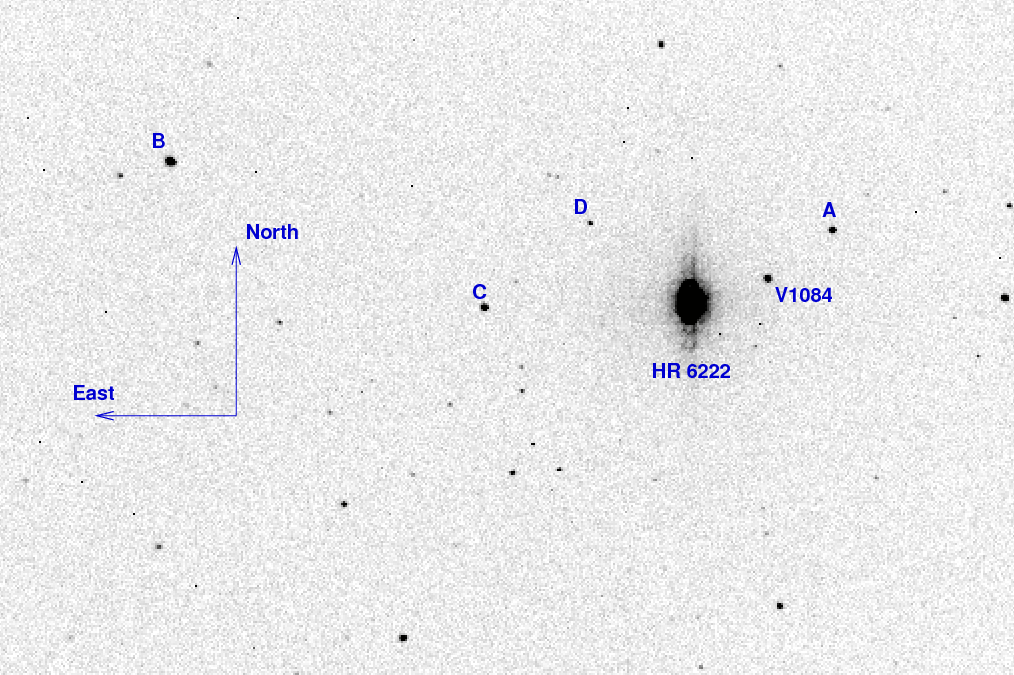
On the night of May 30/31, 2013, summer student Laura Maher and I observed the cataclysmic variable star RXJ1643+34 = V1084 Her. Joe Patterson of the Center for Backyard Astrophysics suggested that members of the CBA observe this star during the summer. The object is at RA = 16:43:45.70 Dec = +34:02:40, so it is well placed for measurements all night long.
The setup was:
Notes from the night
This is a chart of the field taken from last night's data:

The chart has several of the brighter stars in the field labelled with letters, just to keep me straight as I perform the reductions. Photometry of star A provided by Mickaelian et al., A&A 381, 894 (2002) and by the UCAC4:
my Mickaelian UCAC4 label RA Dec B V B V ------------------------------------------------------------------------------- A UCAC4 621-054484 16:43:40.59 +34:03:02 13.51 12.97 13.47 12.96 -------------------------------------------------------------------------------
I measured the instrumental magnitude of each star with aperture photometry, using a radius of 3 pixels = 5.6 arcseconds and sky defined by an annulus around each star. Following the procedures outlined by Kent Honeycutt's article on inhomogeneous ensemble photometry, I used all stars available in each image to define a reference frame, and measured each star against this frame.
One output of the ensemble solution is the value of the zero-point of each frame relative to the others. In the graph below, I plot this zero-point as a function of time. Note the outliers near the end of the run -- there was a period of heavier clouds, then a slight clearing before the end of the run.
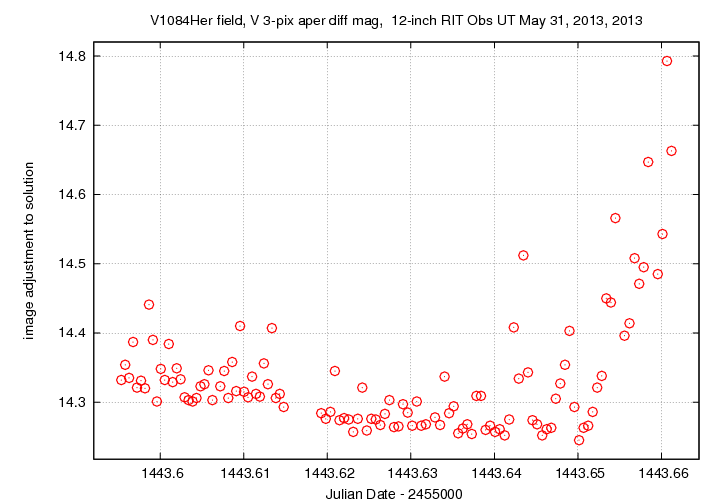
Below is a graph of the scatter in differential magnitude versus magnitude in the ensemble solution.
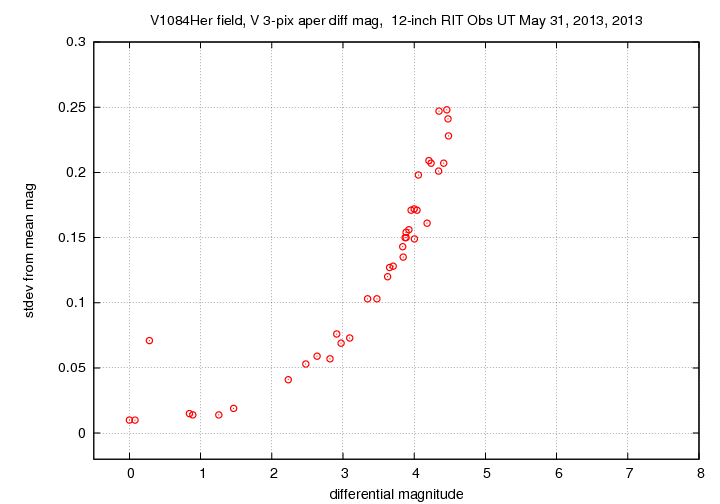
The floor of this diagram corresponds to a scatter of only about 0.010 mag, which is so-so. V1084 Her appears at differential magnitude 0.3; its scatter of 0.07 mag is much larger than that of other bright stars, showing that it is a variable.
Light curves for selected stars (V1084 Her and stars A - D) in the field are shown below. The target is shown by light green crosses.
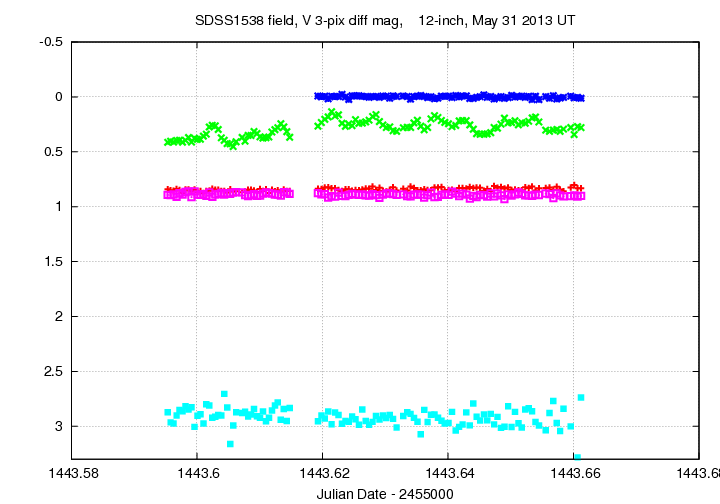
Here's a closeup of the variation in V1084 Her and a few comparison stars.
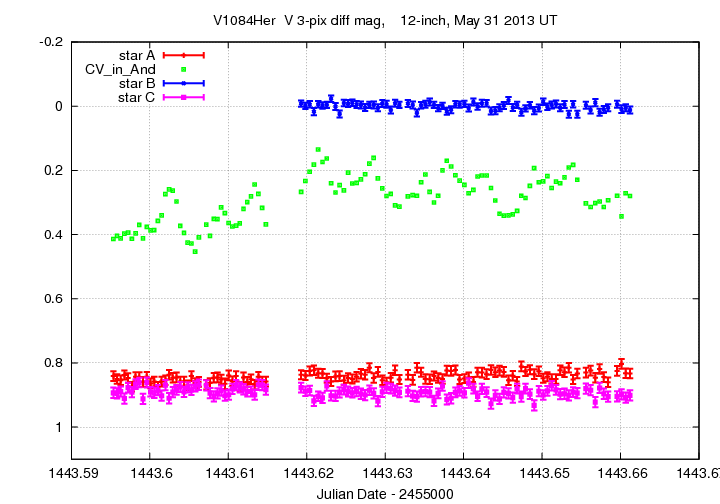
I've made a table of the measurements themselves, with three different flavors of time. The differential magnitudes from the ensemble solution have been shifted so that star "A" in my chart, UCAC4 621-054484, has value 12.96.
Here's the start of the table.
# Measurements of V1084Her made at RIT Obs, May 31, 2013 UT, # by Michael Richmond and Laura Maher, # using 12-inch Meade LX-200 and SBIG ST-8E CCD. # Each exposure 30 seconds long with V filter. # Tabulated times are midexposure (FITS header time - half exposure length) # and accurate only to +/- 1 second (??). # 'mag' is a differential magnitude based on ensemble photometry # using a circular aperture of radius 5.6 arcseconds. # which has been shifted so UCAC4 621-054484 has V=12.96 # # UT_day JD HJD mag uncert May31.09535 2456443.59535 2456443.59862 12.531 0.013 May31.09581 2456443.59581 2456443.59908 12.521 0.013 May31.09628 2456443.59628 2456443.59955 12.529 0.013
Last modified 5/31/2013 by MWR.